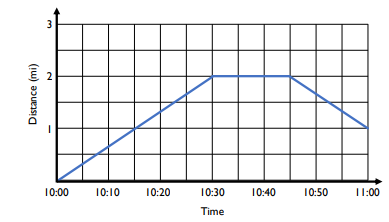Planning tool
Year levels
Strands
Expected level of development
Australian Curriculum Mathematics V9: AC9M8M05
Numeracy Progression: Proportional thinking: P5
At this level, students recognise and use rates to solve problems including constant rates, rate of pay, cost per kilogram, recipes, simple interest and average rates. Students will also be required to make comparisons between two related quantities of different units of measurement. They will write rates in their simplest form, giving the amount for one unit of the second quantity, for example, 50km/1 hour as 50km/h.
Students are to apply their knowledge of rates to solve real-world questions determining rates in different contexts, for example, to compare running rates of athletes in sport; to compare the petrol consumption price of different vehicles; to determine the best value for money between two specials; and to determine annual income.
Students will recall on prior knowledge converting between different units of measurement. They will apply rates to solve problems, for example, converting distance from miles to kilometres. They convert between area units (mm2, cm2, m2, hectares and km2) and volume units (mm3, cm3 and m3).
Teaching and learning summary:
- Demonstrate and show the conversion between different units of measurement before solving problems.
- Expand knowledge of rates to then use them in various contexts.
- Apply rates to calculate and solve problems between two quantities, recognising the relationship between them.
- Record rates in their simplest form using correct unit notation.

Students:
- will confidently convert between units
- understand the meaning of the term 'rate'
- write rates in their simplest form
- determine relationships between different quantities
- solve real-world examples of rates being used, e.g. in finance, record keeping and sports analysis.
Some students may:
- become reliant on these rules and can easily forget which operation or power of 10 to use when converting between units.
- confuse formulas and methods to determine rates.
- not make connections between units of measurement.
The Learning from home activities are designed to be used flexibly by teachers, parents and carers, as well as the students themselves. They can be used in a number of ways including to consolidate and extend learning done at school or for home schooling.
Learning intention
- I will solve problems involving the conversion between units of measurement.
- I will apply rates to calculate solutions to problems.
Why are we learning about this?
There are many everyday situations where it is useful to convert rates to the same unit for easy comparison. This is a good way to determine the best value or best buy.
What to do
Activity 1
- How much will 4kg of salami cost at $8/kg?
- A radio station plays songs at a rate of 9 songs per hour. How many songs would you hear in 8 hours?
- A teenage girl buys 6 pairs of shoes per year. How many pairs of shoes does she buy during her teenage years?
- A surfer catches 9 good waves per hour. How many waves would he catch if he surfed for 2 12 hours?
Activity 2
- A ream of 500 sheets of paper is 5cm thick. How thick is 1 sheet of paper in millimetres?
- A house is 24 metres from the cliff above the sea. The cliff is eroding at 30mm per year. How many years will pass before the house starts to fall into the sea?
Activity 3
Melbourne Stars batting scoring card (7/119)
|
Batting |
Runs |
Balls |
|
M.N. Lann |
16 |
19 |
|
T. Mick |
8 |
16 |
|
M. Shaun |
4 |
4 |
|
S. Smith |
36 |
30 |
|
D. Rom |
9 |
17 |
- Calculate the overall run rate for the match (runs per over), and the team’s overall batting strike rate (runs per 100 balls).
Success criteria
- I can write rates in their simplest form
- I can convert between units of measurement.
Please note: This site contains links to websites not controlled by the Australian Government or ESA. More information here.
Teaching strategies
A collection of evidence-based teaching strategies applicable to this topic. Note we have not included an exhaustive list and acknowledge that some strategies such as differentiation apply to all topics. The selected teaching strategies are suggested as particularly relevant, however you may decide to include other strategies as well.
-

Concrete, Representational, Abstract (CRA)
The CRA model is a three-phased approach where students move from concrete or virtual manipulatives, to making visual representations and on to using symbolic notation.
Go to resource -

Explicit teaching
Explicit teaching is about making the learning intentions and success criteria clear, with the teacher using examples and working though problems, setting relevant learning tasks and checking student understanding and providing feedback.
Go to resource -

Culturally responsive pedagogies
Mathematics is not an exclusive western construct. Therefore, it is important to acknowledge and demonstrate the mathematics to be found in all cultures.
Go to resource

